INSTITUT SUPERIEUR D'ANTHROPOLOGIE
INSTITUTE OF ANTHROPOLOGY
ONLINE COURSES / COURS A DISTANCE
FALL TERM : OCTOBER 2015
REGISTER NOW
TURQUIE – 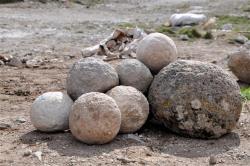 Gevele Castle - Cannonballs from the 15th century period of Ottoman Sultan Mehmet II have been unearthed during recent archaeological excavations in a castle on the Takkeli Mount of the Central Anatolian province of Konya, which was once the capital of the Anatolian Seljuk state. The mount, which has traces of Hellenistic, Roman, Byzantine, Seljuk, Karamanoğulları and Ottoman remains, also houses 5,000 year-old city walls. Excavation works in the Gevele Castle on the mount are continuing. Professor Ahmet Çaycı said that thanks to its structure and location, the castle had served as a natural observation tower throughout history, adding that it had an important role in defending the city. Excavations started three years ago with surface surveys and are due to continue indefinitely. “There are Roman artifacts around the Takkeli Mount. We have determined Roman and Byzantium rock tombs in the lower parts. All these things show the great interest in the region in history,” Çaycı said. He added that the Gevele Castle, which dates back to the Seljuk era, was the “key to Konya” in the past.
Gevele Castle - Cannonballs from the 15th century period of Ottoman Sultan Mehmet II have been unearthed during recent archaeological excavations in a castle on the Takkeli Mount of the Central Anatolian province of Konya, which was once the capital of the Anatolian Seljuk state. The mount, which has traces of Hellenistic, Roman, Byzantine, Seljuk, Karamanoğulları and Ottoman remains, also houses 5,000 year-old city walls. Excavation works in the Gevele Castle on the mount are continuing. Professor Ahmet Çaycı said that thanks to its structure and location, the castle had served as a natural observation tower throughout history, adding that it had an important role in defending the city. Excavations started three years ago with surface surveys and are due to continue indefinitely. “There are Roman artifacts around the Takkeli Mount. We have determined Roman and Byzantium rock tombs in the lower parts. All these things show the great interest in the region in history,” Çaycı said. He added that the Gevele Castle, which dates back to the Seljuk era, was the “key to Konya” in the past.
http://www.hurriyetdailynews.com/sultans-cannonballs-unearthed-in-konya.aspx?pageID=238&nID=81135&NewsCatID=375
ROYAUME UNI – 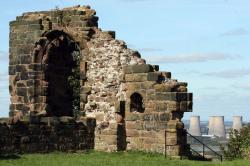 Halton Castle - First excavation at Halton Castle in nearly 30 years. The investigation will attempt to discover the fortress’s origins and answer some of the questions surrounding its later use.
Halton Castle - First excavation at Halton Castle in nearly 30 years. The investigation will attempt to discover the fortress’s origins and answer some of the questions surrounding its later use.
http://www.liverpoolecho.co.uk/news/history-making-first-dig-halton-9055006
CHINE – Taosi - Chinese archaeologists have confirmed the location of the capital of the Yao period about 4,200 years ago. "The archaeological circle has reached a consensus that Taosi is the capital of the period of Yao," said Wang Wei, head of the institute of archaeology under the Chinese Academy of Social Sciences. Yao was one of the sage emperors living in the middle reaches of the Yellow River in Chinese mythology. Excavation of the Taosi site in Linfen City, Shanxi Province, began in l978. Latest excavations showed the ancient city of Taosi covered an area of 2.8 million square meters with various functional divisions, He Nu, a researcher with the institute at a seminar on Yao culture said. "Taosi is what some historical materials identify as Pingyang, the capital of the Yao regime. The era of Yao and the succeeding emperors Shun and Yu are not legend. They are true history," Xinhua news agency quoted He as saying. Pingyang is the ancient name of Linfen City, where the temple and mausoleum of Yao are located. Yao originally lived in Tang County, Hebei Province which neighbors Shanxi. Later he migrated southward and finally chose Pingyang as his capital, according to Chinese historians. Many Confucian histories praised rulers Yao and Shun as models of morality and benevolence, but skeptics of the early 20th century challenged their existence.
http://www.business-standard.com/article/pti-stories/archaeologists-confirm-location-of-yao-capital-4200-yrs-ago-115041600107_1.html
CHINE – 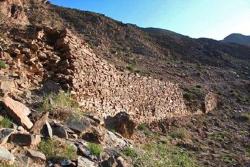 Great Wall - Archaeologists have discovered ruins of the Great Wall along the border of northwest China's Ningxia Hui autonomous region and Gansu province, dispelling a common belief that there were no sections of the wall in this area. The remains, nine sections with a total length of more than 10 km, are believed to be part of the Great Wall built during the Qin Dynasty (221 BC-206 BC), according to Zhou Xinghua, former curator of the Museum of Ningxia Hui autonomous region and a Great Wall expert. The findings, made in March and April by Zhou and other researchers, give historians fresh insight into where the wall was built. "Finally, we're able to see the whole picture of the Qin Great Wall," said Zhou. Among the ruins, six sections, constructed with stones or loess, stretch about 10 km between Nanchangtan Village of Ningxia and Jingyuan County of Gansu on the southern bank of the Yellow River. Because of flooding and natural degradation, the height of these sections of the Great Wall has been reduced to one to five meters. The other three loess-made sections are located in Damiao region of Jingyuan County. They are 50 meters long in total and five meters high. To prevent foreign invaders from crossing the Yellow River when it was frozen, the Qin state, which defeated other powers during the Warring States Period (475-221 BC) and later established the Qin Dynasty, built fortifications along the valley beside the river, according to Zhou.
Great Wall - Archaeologists have discovered ruins of the Great Wall along the border of northwest China's Ningxia Hui autonomous region and Gansu province, dispelling a common belief that there were no sections of the wall in this area. The remains, nine sections with a total length of more than 10 km, are believed to be part of the Great Wall built during the Qin Dynasty (221 BC-206 BC), according to Zhou Xinghua, former curator of the Museum of Ningxia Hui autonomous region and a Great Wall expert. The findings, made in March and April by Zhou and other researchers, give historians fresh insight into where the wall was built. "Finally, we're able to see the whole picture of the Qin Great Wall," said Zhou. Among the ruins, six sections, constructed with stones or loess, stretch about 10 km between Nanchangtan Village of Ningxia and Jingyuan County of Gansu on the southern bank of the Yellow River. Because of flooding and natural degradation, the height of these sections of the Great Wall has been reduced to one to five meters. The other three loess-made sections are located in Damiao region of Jingyuan County. They are 50 meters long in total and five meters high. To prevent foreign invaders from crossing the Yellow River when it was frozen, the Qin state, which defeated other powers during the Warring States Period (475-221 BC) and later established the Qin Dynasty, built fortifications along the valley beside the river, according to Zhou.
http://europe.chinadaily.com.cn/china/2015-04/15/content_20441162.htm
EGYPTE - 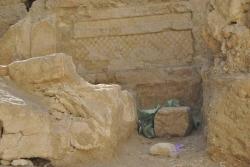 - Alexandrie - The Antiquities Ministry's decision to demolish a Hellenistic-era archaeological site in Alexandria was carried out on Thursday, destroying the ancient ruins and leveling the area into a flat lot. The site of Al-Abd Theater in Camp Shizar , which was discovered in 2013, dates back to the Roman and Hellenistic eras 323 BC and lies in a residential neighborhood just a block inland from the Mediterranean coast.Archaeologists were able to recover some artifacts from the site before the ancient structures were destroyed.
- Alexandrie - The Antiquities Ministry's decision to demolish a Hellenistic-era archaeological site in Alexandria was carried out on Thursday, destroying the ancient ruins and leveling the area into a flat lot. The site of Al-Abd Theater in Camp Shizar , which was discovered in 2013, dates back to the Roman and Hellenistic eras 323 BC and lies in a residential neighborhood just a block inland from the Mediterranean coast.Archaeologists were able to recover some artifacts from the site before the ancient structures were destroyed.
http://www.egyptindependent.com//news/hellenistic-era-ruins-demolished-alexandria
ROYAUME UNI – 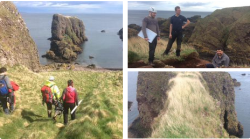 Aberdeenshire - Archaeologists have uncovered what they describe as a "significant" Pictish fort on a remote sea stack in Aberdeenshire. This is the first time the site has been excavated. The team from Aberdeen University think their find suggests there could be similar sites nearby.
Aberdeenshire - Archaeologists have uncovered what they describe as a "significant" Pictish fort on a remote sea stack in Aberdeenshire. This is the first time the site has been excavated. The team from Aberdeen University think their find suggests there could be similar sites nearby.
VIDEO = http://www.bbc.com/news/uk-scotland-32332995